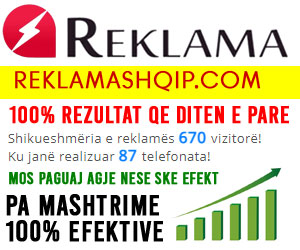‘I accidentally made Oscars history – now people are queueing hours to watch my movie’
The intensely emotional film has scored international acclaim.

To view this video please enable JavaScript, and consider upgrading to a web browser that supports HTML5 video
Up Next
Previous Page Next PageFilmmaker Gints Zilbalodis’ heartwarming animated tale, Flow, has made history as Latvia’s first-ever Oscar-nominated movie.
The tear-jerking odyssey about a cat overcoming its fear of water has scored international acclaim, landing the Golden Globe for best animated feature, two Academy Award nods (animated and international feature) and an impressive 97% on Rotten Tomatoes, to name just a few of its accolades.
So the humble beginnings of this decorated movie may come as a surprise to the adoring audience.
‘This is based on a short film that I did in school,’ Gints tells Metro ahead of the 2025 Oscars.
It’s only the director’s second feature (his first, Away, was also praised while doing the film festival circuit) and he is quickly adopting a signature style – packing a powerful punch with no-dialogue movies that let swelling soundtracks and vibrant facial expressions do the talking.
But the journey to getting the movie made had its ups and downs, especially after one film studio pulled out of their partnership, meaning Gints had to set up his own studio in Latvia to make it work.
The idea for the animation first came to director Gints Zilbalodis in school (Picture: Dream Well Studio)‘I initially thought we would work with an existing studio, and I could just focus on the filmmaking and the storytelling but it didn’t work out so we had to figure out what to do.
‘If I had known that I would have to [make my own], I might have been too afraid to start,’ he explained.
As for his creative process, plenty of thought goes into figuring out how to tell a story with no words.
‘When I’m coming up with these stories, I’m trying to figure out a scenario where it makes sense that they’re not talking. In this case, it’s all animals [who] behave like real animals.
‘They don’t tell jokes or walk on two legs, their personalities are also based on these animals. They’re not thinking like humans (at least initially).
‘As the story develops we maybe push them in [that] direction but we try to make them as believable as possible and that is something that I haven’t seen as much.
‘You can say a lot with the music, sound, editing, animation, lighting, cinematography… everything. They have more room to be expressive and we can push things further.’
The soundtrack, animation style and interactions between the animals is the driving force of the movie (Picture: Dream Well Studio)The side-effect of this method is the perfect antidote to 21st-century TV watching, mainly phone in hand and zoning out.
‘Nowadays there are a lot of TV series or films that you can just put in the background and listen to. You don’t even have to pay attention and watch it. So I wanted to create something that’s the opposite of that. Audiences want to pay attention, and they want to work for the story,’ Gints shares.
Some reviewers have likened it to the lauded 2023 movie Robot Dream and it shares similar emotionally-stirring qualities to fellow Oscars contender The Wild Robot which also investigates the relationship of animals with nature.
And it even echoes the aesthetic of the Oscar-winning The Boy, the Mole, the Fox and the Horse in its investigation of the tenderness of animals.
Whatever magic Gints is putting into the movie, it’s clearly working as the film is sweeping Latvia, filling the nation with pride.
‘It is the first time that a film from Latvia has had any of this recognition, a lot of people are very excited. We had the Golden Globe trophy exhibited at the National Museum of Art. People are lining up for an hour just to see it. So it’s pretty crazy back home,’ he recalls with a grin.
Gints accepted a historic Golden Globe for the feature (Picture: Getty)And he hopes its mega-success will be enough to help the industry make more films of this ilk, not just for Latvia but the whole independent animation community.
He reflects: ‘I think this will show that there’s an appetite for films like this. You can make an independent film, and it can be successful. It doesn’t even need to make 100 million at the box office.
‘With smaller independent films, you don’t really have to make it for everyone. It can be for a very specific audience which makes it more special. That’s actually what I had intended to do, to make a personal film that I myself would like to watch.
‘It happened accidentally that it became something universal. I thought it would just be screened at festivals and have this small niche audience.
‘[But] because it’s very specific and unique and different than what we’re used to seeing, that made it more attractive to people. [They] want to see something that’s different to what they’ve seen before.’
And there’s much more to this movie than meets the eye.
In Flow, the animals must fight for survival when the land is destroyed by an all-consuming flood in an area devoid of humans, a fitting parable amid the ongoing fight against climate change.
Although the climate change commentary was initially unintentional, Gints embraces it (Picture: Dream Well Studio)As Gints says: ‘Every time I make stories, it always starts with the character and the relationship. In this case, it started with the cat and its fear of water because it’s something we don’t need to explain.
‘To convey the water in the scariest way possible, we made it into this big flood that destroys the cat’s home. I realise that it also parallels current events but if I started with a message there’s a danger of it being preachy.
‘It’s organically interwoven into the story, it comes from the character. I think that makes it more interesting [that] it’s not forced.
‘We don’t see humans in this story, but we’re left to imagine what happened to them. We have to figure that out ourselves.
‘[Through animals] the story feels more intense and emotional because there’s an innocence to them. If we saw humans going through this, I think we would care less about that,’ Gints says.
And he hopes the story can reach audiences that wouldn’t traditionally seek out a documentary about global warming.
‘I think if you make a documentary about these disasters and all the scary stuff happening nowadays, only people who already would care about that might watch it.
He hopes it will reach audiences far and wide (Picture: Dream Well Studio)‘But because [Flow] is a fun adventure story with animals and there’s light as well as the serious topics we’re exploring, it balances it out. And actually it might find an audience who might otherwise not be interested in considering these things,’ he says.
Ultimately, however, he hopes audiences will love this story for years to come.
‘We wanted it to feel timeless and universal so I think it will be relevant many years from now.
‘It’s not really about the logic of it. It’s about creating an emotional experience. We wanted to create something that feels very immersive, that transports you into this world so it feels like you are the cat – and I feel like that you can only do that in this medium.’
Flow arrives in UK cinemas on March 21, 2025.
Got a story?
If you’ve got a celebrity story, video or pictures get in touch with the Metro.co.uk entertainment team by emailing us [email protected], calling 020 3615 2145 or by visiting our Submit Stuff page – we’d love to hear from you.





